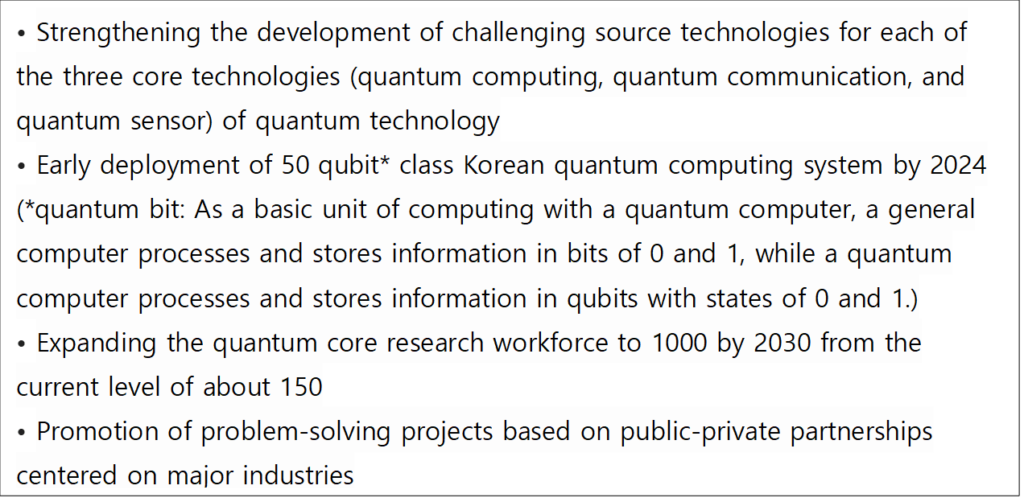[Article = Park Se-hwan Ph.D.]
Quantum technology, which will lead innovation in all industries, is attracting attention as an innovative technology that enables ultra-fast computing (quantum computing), ultra-reliable security (quantum communication), and ultra-precise measurement (quantum sensors).
Accordingly, the special advantages and application fields of quantum technology are presented, the level of quantum technology in Korea is diagnosed, and the characteristics of representative platforms that are leading the global technology market related to quantum computing software platforms are introduced.
In order to look at quantum technology trends, it is necessary to analyze the development trends of platform software in depth, focusing on hardware independence, scalability and reusability of programs, and resource estimation and analysis for optimization.
Based on the main process of developing quantum computing technology in Korea, it is necessary to focus on continuous technology development and policy promotion to lay the foundation for entering the global technology market. In this regard, I will also share the main processes of quantum computing technology development that I have participated in.
Current Status of Quantum Technology in Korea
Quantum technology is a breakthrough innovation that goes beyond the limits of existing technology, especially in the fields of computing, security, and measurement, and is recognized as a game-changer that will lead innovation in all future industries, including semiconductors.
Quantum computing technology is evaluated to be capable of calculating more than 30 trillion times faster than current computers. It is known that it takes more than 1 million years for a supercomputer and a second for a top-level quantum computer to unlock the 2048bit RSA public key.
Quantum communication technology will be able to fundamentally block hacking, enabling highly reliable information security. In 2017, China succeeded in experimenting with quantum communication at a distance of 1,200 kilometers for the first time in the world, and it is considered the closest technology to commercialization. Quantum communication technology is virtually impossible to hack because the information itself changes when there is an attempt to eavesdrop or wiretap. The technology gap between Korea and China, a leading bilateral communication country, is estimated to be 1.6 years.

Quantum sensor technology is capable of ultra-precise measurements that can detect even the slightest changes in magnetic field, temperature, and gravity, and is expected to significantly change manufacturing processes such as semiconductor and battery design and defect analysis. It is capable of long-range and ultra-precise measurement, and it is expected to be very useful in the military electronics industry.
As such, quantum technology will be applied to a wide variety of industries (pharmaceuticals, chemicals, automobiles, energy, aerospace, artificial intelligence, finance, transportation and logistics, manufacturing and semiconductors, biomedical technology, defense and security, etc.) to prove its superiority. Through this, we are looking forward to groundbreaking technological innovations in the future industry and economy as a whole.
The core of the government’s “Quantum Technology R&D Investment Strategy” can be summarized in the following four points.
Korea’s quantum technology level is about 81.3% compared to Europe, which has been leading global quantum technology through continuous investment for more than a decade, which is the lowest level in all ICTs in Korea.
According to the ICT technology level survey released by the Korea Information and Communication Planning and Evaluation Institute in 2019, the technology level of each ICT field in Korea was 97%, IoT 92.3%, AI 87.4%, quantum technology 81.3% and ICT average 87.4%.
The comparison of the relative levels of quantum technology in major countries shows that Korea lags behind major countries with 81.3% in Korea, 99% in the U.S., 90.4% in Japan, and 93.2% in China based on Europe, the leading country. The amount of R&BD investment has also expanded from 10.6 billion won in 2019 to 32.6 billion won in 2021 based on dedicated projects, but it is still significantly insufficient compared to leading countries.


